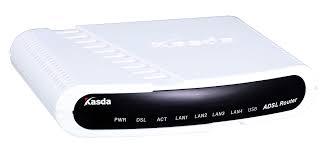A contraction of "Modulator - demodulator", a modem allows a computer to communicate over an analogue medium (most commonly a telephone line). The modem encodes digital signals from the computer as analogue signals suitable for transmission (modulation) and decodes digital data from a modulated analogue signal (demodulation). Using modems two computers may communicate over a telephone line, with the data passed between them being represented as sound.
Modems are usually involved with dial-up internet services. As broadband catches on, they are falling into disuse. However, the devices used to connect to broadband connections are also called modems, specifically DSL Modems or Cable Modems.
